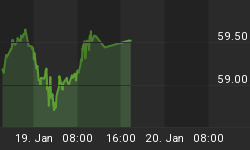Back in mid-December, in Master of Disaster we picked on Citigroup as the bank who brought down Glass Steagall and ironically would be on the front line of the subsequent financial disasters Glass Steagall was designed to prevent. In Follow The Bouncing Banks with Citigroup trading in low $30 range we noted that ultimately the stock could trade down to $20 or 1x book in a back of the napkin worst case analysis, which put it down another 45%. This week C made it back down near its 52 week low of $22.35 so we wanted to highlight some of the issues in the banking system so that we can be prepared for further risk out of the credit markets.
These banks are currently sucking wind on various fronts and have been in preservation mode trying to protect what's left of their non-transparent black hole balance sheets. This retrenchment by the banking system has reared its head yet again as the unwinding of numerous hedge funds last week put renewed strain and drove chain reactions across the financial system. With massive credit supply hitting the street last week we saw the ripple effects hit the balance sheets of other companies who rely on the commercial banks for credit. As bid lists were circulated throughout the street and the massive supply of bonds increased, real money buyers backed off pricing and placed large discounts on these credits. The mark for the trades in turn caused the collateral for other leveraged owners of debt to fall which triggered further margin calls which triggered further selling. We saw the ill effects of this chain reaction in the price of Thornburg Mortgage (NYSE: TMA) which he past week has collapsed over 60% from already depressed levels just in the last couple of weeks.
Consider how the dominoes fall. Money centers and prime brokers such as Citi/Smith Barney are operating impaired balance sheets. They don't even know themselves what their assets are worth. Their leveraged customers are seeing stress in their own accounts due to adverse pricing in the credit markets. The banks who are under stress themselves increase the margin requirement for their customers which causes forced liquidation in the credits which in turn drives the prices even lower. Other institutions who aren't even involved with the prime brokers are seeing their collateral fall in value which is in turn causing their lenders to require more collateral for the credit facility which is driving further selling.

I don't mean to beat a dead horse but we have to be cognizant of the fact that we operate in a financial economy and the banks are the central players. As long as they can't get a handle on the value of their assets their balance sheets will be under stress and these collateral calls will continue. The carry trade model was overly leveraged and now has been busted. Any institution that depends on short-term credit to buy higher yielding long-term credit will be lucky to survive as long as the banks are de-levering themselves and driving de-leveraging across the system. Our whole economy is being held hostage by the banks and finding the bottom will be difficult to quantify. If you can tell how many leveraged credit vehicles are out there and how much debt they own you might be able to estimate the embedded risk. Without that information we are just guessing.
As we navigate the coming weeks we will keep a close eye on the treasury market and yield curve for clues that credit market stress is either abating or intensifying. Further steepening could be indicative of further stress while a front end led flattening could indicate the market is stabilizing.















